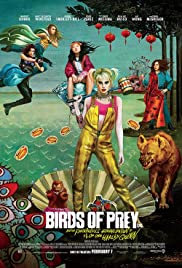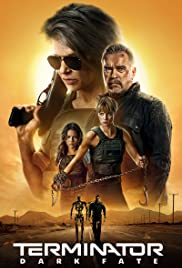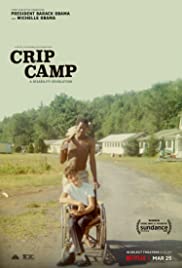Fighting with My Family– This is a underdog story set in the professional wrestling world. This is the story of Saraya-Jade Bevis, better known as Paige to WWE fans. Starting at 13 years old, we watch her join her family’s wrestling company. When Paige is 18, she and her older brother Zak send a tape of them wrestling over the pond (they were born in Norwich, England) to the WWE’s development division. They are both called over to audition and only Paige is selected into the NXT program.
Family is a pretty predictable coming of age/underdog sports movie. That’s not to say it’s bad in anyway, it’s a lot of fun with a lot of great actors and characters. It follows all the beats to this genre to the letter: low odds of getting selected, sibling rivalry, training is way harder than expected, crisis of self and ability, rousing retribution, cheers at the end. Being about wrestling gives it a breath of fresh air though. There are a lot of WWE cameos and the wrestling scenes are well done. Paige’s family is a big part of this (hence the family) and is easily the strongest part of the story (Zak in particular). There are a lot of good life lessons even if they can be heavy handed at times.
Two quibbles from me. One, Dwayne Johnson is prominently on the movie poster and he’s simply the one wrestler with the longest cameo. Five minutes of screen time across two scenes. I see what you did there marketing team. Second, for the whole movie they show how wrestling is a collaborative sport. It’s not real competition but it’s performance that takes amazing dedication and practice to do. At the end, the event at Wrestlemania is shown as a real fight. Paige never meets her opponent until she walks into the ring, for example. It undermines almost all of the story beats that comes before it. Sure, doing what I want cuts down the “Rocky” like triumph for the finale to show what really happened with preparation, but there are ways to do it.
The Platform– Imagine a prison that’s built vertically underground. One cell, no windows, no hallways, no common areas, stacked on top of each other with two people per cell. In the middle of the cell, there is a hole where a platform lowers from the top. This is how inmates are fed. At floor zero a banquet is placed on the platform and each floor gets 2 minutes to eat what they want. You can imagine what’s left by floor 50…and there are hundreds of floors. It’s possible to go down on your own, you could jump to the level below you (it’s like 20 feet) but it’s really hard to go up as you’d need help from the people above you (not gonna happen).
The movie follows a man named Goreng starting his sentence. His item of choice (everyone is allowed to bring in one item, with some restrictions) is the book Don Quixote, something many of the prisoners he meets question the value of. The Platform is an interesting take on the old question: Can we all just get along? Everyone in “the Hole” is there for various reasons, some we find out are there by choice. This is a place of punishment, make no mistake about it. But the reasoning is, from The Administration that runs it (allegedly, you don’t really know if anyone is telling the truth) “the Hole” is only as bad as those inside make it. The amount of food sent down is enough for everyone. Calorie based, anyway.
The Hole, as Goreng quickly finds out, has it’s own caste system and rules based on what floor you are on. The higher you are in the chain the better you eat. People feel entitled to eat as much as they want because they are higher in the prison stack. Forget the two people directly below you, they are literally worth less than you. The people 25 floors below them? Not even worth thinking about. This system cranks out the worst of humanity and that makes hell on Earth.
Here’s the thing: people are randomly placed in the Hole. There’s seemingly no merit to it. Every two weeks (I think I’m remembering that time right) everyone is knocked out with sleeping gas and moved to a different floor. You wake up on a floor higher than you were before, the better chance you get to eat. This makes people fall into self-preservation mode without a thought. If you were starving for 2 weeks, you are going to consume as much as you can when given the chance. Knowing that you might be starving on the next move puts you on the defensive with everyone.
I love this premise and it offers what I love to do in my own fiction writing: each character is a different perspective in a pressure cooker scenario. How does a person react and why? How did they get here and who were the before this? I’m talk about any of the people Goreng meets because I think it’s important to not know about them going in, it would ruin too much.
The Platform reminds me a lot of the movie Cube that came out in the early 2000s, which I loved. I think that was the first movie I saw that did a bizarre prison concept. This scenario is hard to get right as each scene needs to escalate from the previous one at just the right speed and intensity or it doesn’t work (peaking too early being the big problem). Tough to do a good ending too, which I think this did well. Really interesting to watch and it came out of nowhere so that made it a little more special for me. You can find it on Netflix.
Stuber– When Detective Vic Manning gets a tip-off from one of his informants about a big drug deal going down, Vic races into action to try and nab a drug boss he’s been chasing for years. The timing couldn’t be worse though. That morning Vic got eye surgery and he can barely see. Vic is forced to call an Uber to drive him around town to chase leads and he ends up recruiting the driver, Stu, into a night that doesn’t go the way either expected.
Starring Dave Bautista as Vic and Kumail Nanjiani as Stu, this half a buddy cop movie was a lot of fun. It hits all the marks for this kind of movie. Two opposite people forced to work together, a lot of funny lines, physical gags, and quality action scenes. I’m a big fan of Dave Bautista and he’s just as lovable as you think he’d be in a role like this. Pairing him with Kumail works perfectly, the on-screen chemistry is natural and that makes the life lessons each learn about themselves feel genuine. While Stuber doesn’t do anything new, every movie doesn’t have to. A pleasant surprise, just be aware it’s rated R for cursing and violence. The gore isn’t over the top but a whole lotta people do get shot.
Extraction– This is easily the best original action movie on Netflix right now. I see Chris Hemsworth in military gear on the poster, I have a pretty good idea what the movie is about. And what you think it’s about, you are right: Tyler Rake is a mercenary hired to extract the kidnapped son of a drug lord in Bangladesh. It goes bad, quickly.
Hemsworth has years of experience playing a hero on screen, so this is a fitting role for him. His Thor charm isn’t here with Rake as this character is a mortal who has been put through the ringer while trying to escape his past (yes, you find out what he’s running from). Rake is much more gruff and stoic so there is less here to immediately love. Rake is extremely loyal and despite his murder-for-hire profession, clings to some morals. His time with the kid, named Ovi, is done well and offers a good story arc for all of the main characters (not a fan of the final shot in the movie though).
Since action movies live and die on their action scenes, I’m pleased to report that Extraction delivers on all of them. Incredibly well shot and paced, there are multiple stand out sequences. The crown jewel is the long “one take” chase scene shortly after Rake rescues Ovi from his captors. It’s at least 10 minutes long and is packed with more highlights than I can possibly mention here. Complex is putting it mildly as it looks like you are the camera man, running behind, along side and in front of all the action. Going in and out of cars, up and down stairs, scooching through narrow hallways, flying through windows, all the while bullets, knives, and fists are flying. You have to see it. Plus, that scene is right after a close quarters fight where Rake takes out a pack of guys all by himself, something I didn’t think the movie would top. I’d put the action choreography up there with The Raid. I’m impressed.


